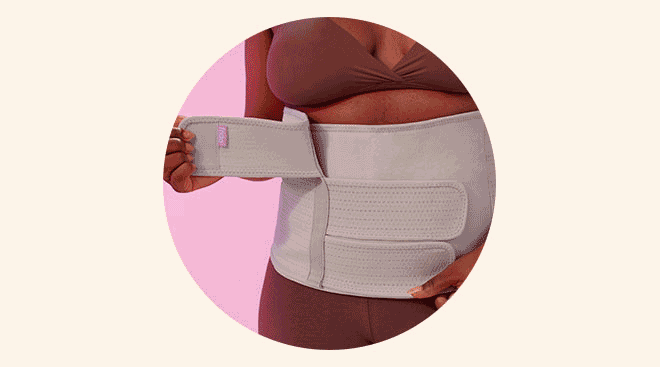A Quick Guide to HypnoBirthing and Its Techniques
Want to have a truly empowered labor and delivery, where you focus on progress over pain and have a calm and connected experience? You might consider opting for a HypnoBirth. No, this doesn’t mean someone will put you into a trance or that you’ll lose control of your mind and body. Rather, with HypnoBirthing, you’ll take the reins to get yourself relaxed and ready. But exactly what is HypnoBirthing—and what are the benefits? HypnoBirthing techniques draw heavily on skills such as meditation, visualization and deep relaxation, and they can help you feel more peacefully prepared when it’s time to give birth. Ready to learn more? Read on to get the lowdown.
Although many educators and companies now teach childbirth techniques inspired by hypnosis, the term “HypnoBirthing” was originally coined by HypnoBirthing Institute, a trademarked childbirth education program based on the philosophy of its founder, the late Marie “Mickey” Mongan. Mongan’s four children were born in the 1950s and 1960s, when unmedicated births were far from the norm. Inspired by her own experience—and her desire to give birth without intervention—she became a hypnotherapist and started developing the HypnoBirthing program. Today, there are certified HypnoBirthing instructors in 46 countries worldwide, and its principles have become popular with celebrities like Kate Middleton, who spoke positively of her experiences using HypnoBirthing techniques for each of her three deliveries.
The core belief of HypnoBirthing is that when your body and mind are fully relaxed, you’re better equipped to deal with the pain associated with childbirth, and your body and birthing muscles are more readily able to function in the way that nature intended. “The uterus is the set of birthing muscles, and when a woman feels safe and supported, those muscles work harmoniously. The cervix opens and the baby is nudged down, lower and lower,” says Vivian Keeler, DC, a chiropractic physician, certified doula and president of HypnoBirthing Institute. “When [you’re] stressed, those circular muscles—instead of gently opening—clench down and shut. It’s a primal or protective response, and sometimes labor can slow down or even stop.” HypnoBirthing is about taking fear out of the equation, so you can focus on breathing, relaxing and letting go—and let your body get to work.
Choosing to have a HypnoBirth doesn’t mean you’re going to be in some kind of daze, or that you won’t remember your birth experience. “We teach conscious relaxation, so when you’re in the labor process, you can still be aware of what’s going on with your body and surroundings. But you can choose to go into your own space to manage contractions and the pain,” says Sarah Roe, CNM, a certified nurse midwife and co-founder of Flourish Wellness and Birth Co. in Sioux Falls, South Dakota.
When you choose to explore a HypnoBirth, you’ll not only learn about the childbirth process but also explore different strategies to help you prepare. “We address the physical—the ‘getting the baby out’ part—but also the emotional and spiritual aspects, which may even be more important,” says Keeler. Below, the most common HypnoBirthing techniques:
- Self hypnosis. If you’ve ever practiced meditation—or even just become so absorbed in something that you blocked out everything else going on around you—you’ve probably experienced something akin to self-hypnosis. “You can turn it on and off as you choose—nobody is putting you in a trance, but you’re training your mind to go to different places when you need it to,” says Roe.
- Breathing and deep relaxation. Breathing is an important way to cope with the pain of labor. But HypnoBirthing teaches you to use your breath in conjunction with your contractions during active labor, transition and while pushing the baby out.
- Visualization and affirmations. These tools are often used in tandem to help you prepare mentally for the birth. This is all about replacing fear with focus. “We do this with affirmations, a positive mindset and visualization," says Keeler.
A zen HypnoBirth might sound like a desirable experience, but are there actual benefits? Data from the HypnoBirthing Institute found it resulted in lower rates of medical interventions, such as anesthesia use, epidurals and c-sections. In fact, the c-section rate among HypnoBirthing moms was noted be 17 percent, compared to the national average of 31.8 percent reported by the Centers for Disease Control and Prevention (CDC)). One caveat to note is that this data doesn’t distinguish between first-time and repeat c-sections.
Plus, according to one 2023 study, women who utilized hypnobirth methods said they felt empowered, knowledgeable and in control throughout the process. Regardless of how the birth went, the study found that using hypnobirth methods to prepare resulted in increased positive birth experiences. A 2013 Danish study, which included over 1,000 women, also found that those who used hypnosis techniques reported a better childbirth experience than those who didn’t.
Finally, a 2016 study by Cochrane found that those trained in self-hypnosis required less pain management during labor, but noted no significant differences in epidural use or the likelihood of having a vaginal delivery between moms who used HypnoBirthing and those who didn’t.
That said, it’s also important to note that the potential benefits of HypnoBirthing techniques can extend beyond the birthing parent; it can empower those in a supportive role to be more active and engaged. Roe explains that, in her courses, partners learn the basics of pressure-point massage and practice positive-language cues to help encourage laboring moms. Most importantly, partners are taught to be advocates. “We empower the partners to be kind of a shield,” Roe says. “Maybe that means setting the stage of the room by dimming the lights, or speaking in hushed tones to encourage others to do the same.”
The best laid plans can go astray during labor. Despite extensive preparation and preconceived notions, your birth plan might go in a completely different direction. As researchers in BMC Pregnancy & Childbirth noted, in some instances “self-hypnosis raised [moms’] expectations of the type of birth they could experience, and when this did not materialize, they were left with feelings of frustration and disappointment.”
But HypnoBirthing techniques can prove useful even if plans do change. "I think it’s important when going through the class to have an idea of what you want birth to look like, but also be okay if it doesn’t go that way… Our end goal is always to have a healthy mom and a healthy baby,” says Roe. “Let’s say you need a c-section—you can still use [HypnoBirthing techniques] in the operating room, because you will likely have a lot of anxiety around the change of events.”
One more potential drawback? In some noted cases, when laboring people who had used self-hypnosis techniques arrived at the hospital, the staff sent them home, thinking they weren’t far enough along to be admitted due to their strikingly relaxed demeanor. This is one reason it’s important to have someone with you—like a partner or a doula—who can advocate on your behalf.
Once you’ve decided you’d like to try HypnoBirthing, it makes sense to take a class. “I generally recommend signing up for something that begins around the start of the third trimester or 28 weeks,” says Roe. You can find a certified HypnoBirthing educator in your area by using the search tool on HypnoBirthing International. As part of your training, you’ll also be tasked with practicing self-hypnosis with the help of audio guides.
Not quite ready to commit to a HypnoBirthing class? Start your education with a little reading. Arguably the best HypnoBirthing book is HypnoBirthing: The Mongan Method, which gives a good overview of the philosophy. Another book that focuses on the power of women’s bodies during the birth process is Ina May’s Guide to Childbirth.
Whatever you choose, it’s important to realize that HypnoBirthing doesn’t have to be an all-or-nothing approach. “There is a misconception around HypnoBirthing that you must have an all-natural birth, in your backyard, in a tub of water, under a full moon,” says Keeler. Suffice it to say, that’s not the case. You can have a standard hospital experience; you can choose medication; you can change your mind.
Preparing for a HypnoBirth certainly isn’t as simple as showing up to the hospital and trying to assume a calm demeanor. It’ll take time and practice. But consider the fact that HypnoBirthing skills, such as deep relaxation and adopting a positive mindset, are also good life skills. "You can also use these tools during pregnancy if you’re getting anxious—or postpartum when you’re sleep-deprived and your patience is thin,” says Roe. “These things aren’t just for labor, you can use them all through life.”
Please note: The Bump and the materials and information it contains are not intended to, and do not constitute, medical or other health advice or diagnosis and should not be used as such. You should always consult with a qualified physician or health professional about your specific circumstances.
Plus, more from The Bump:
Sarah Roe, CNM, is a certified nurse midwife and the co-founder of Flourish Wellness and Birth Co., a freestanding midwife-owned birthing center in Sioux Falls, South Dakota. She graduated from Frontier Nursing University in Versailles, Kentucky.
Vivian Keeler, DC, is a chiropractic physician, doula and HypnoBirthing childbirth educator and the president of HypnoBirthing Institute. She is also the founder of Amazing Births and Beyond, a provider of prenatal and postpartum services in the South Florida area.
HypnoBirthing Institute, HypnoBirthing International, 2021
HypnoBirthing Institute, HypnoBirthing Techniques and Benefits, 2021
Centers for Disease Control and Prevention, National Vital Statistics Report, February 2022
Sexual & Reproductive Healthcare, Women’s experiences with hypnobirth – A qualitative study, September 2023
Birth Issues in Perinatal Care, Antenatal Hypnosis Training and Childbirth Experience: A Randomized Controlled Trial, December 2013
Cochrane, Hypnosis for pain management during labour and childbirth, May 2016
BMC Pregnancy & Childbirth, Unexpected consequences: women’s experiences of a self-hypnosis intervention to help with pain relief during labour, September 2015
HypnoBirthing Institute, Find a Hypnobirthing Educator Near You, 2021
Learn how we ensure the accuracy of our content through our editorial and medical review process.
Navigate forward to interact with the calendar and select a date. Press the question mark key to get the keyboard shortcuts for changing dates.




















































